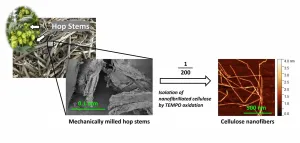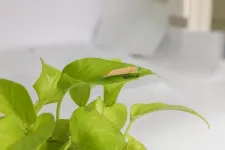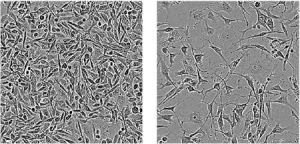Lottery-based incentives do not increase COVID-19 vaccination rates
2021-07-02
(Press-News.org) (Boston)--Would you be more willing to get vaccinated against the COVID-19 virus if you could participate in a lottery for cash and prizes? The answer was surprisingly no, according to Boston University School of Medicine (BUSM) researchers who found that Ohio's "Vax-a-Million" lottery-based incentive system, intended to increase COVID-19 vaccination rates, was not associated with an increase in COVD-19 vaccinations.
Prior reports in the media had suggested that the Ohio lottery increased COVID-19 vaccinations, leading other states to use COVID-19 vaccine incentive lotteries in an attempt to increase slowing vaccination rates. "However, prior evaluations of the Ohio vaccine incentive lottery did not account for other changes in COVID-19 vaccination rates in the United States, such as those that may have been due to expansion of vaccination to ages 12-15," explained corresponding author Allan J. Walkey, MD, MSc, professor of medicine at BUSM.
Using data from the U.S. Centers of Disease Control to evaluate trends in vaccination rates among adults 18 and older, the researchers compared vaccination rates before and after the Ohio lottery versus other states in the U.S. that did not yet have vaccine incentive lottery programs. Vaccination rates in other states served as a "control" for vaccination trends measured in Ohio, allowing the researchers to account for factors besides the Ohio lottery (such expanding vaccine eligibility to adolescents) throughout the country.
"Our results suggest that state-based lotteries are of limited value in increasing vaccine uptake. Therefore, the resources devoted to vaccine lotteries may be more successfully invested in programs that target underlying reasons for vaccine hesitancy and low vaccine uptake," said Walkey, a physician at Boston Medical Center.
The researchers believe identifying interventions that can successfully increase COVID-19 vaccination rates is a critical public health issue necessary to curb the pandemic. "It is important to rigorously evaluate strategies designed to increase vaccine uptake, rapidly deploy successful strategies, and phase out those that do not work," Walkey said.
Although Walkey and his colleagues were sorry to see that state lottery incentives were not associated with an increase COVID-19 vaccinations, they hope their findings will lead to a shift in focus away from ineffective and expensive lotteries, and on to further study of other programs that may more successfully increase vaccine uptake.
INFORMATION:
These findings appear online in the Journal of the American Medical Association.
Allan J Walkey was funded by NIH R01HL139751, NIH R01HL151607, NIH R01HL136660, and NIH OT2HL156812-01. Anica C Law was funded by NIH K23HL 153482. Nicholas A Bosch was funded by NIH 1F32GM133061-01.
ELSE PRESS RELEASES FROM THIS DATE:
2021-07-02
Some three quarters of the biomass in hop plants used in beer-making ends up in landfills. But a group of Japanese researchers has developed a technique that 'upcycles' that waste hop into cellulose nanofibers (CNFs). A paper describing the technique was published in the journal ACS Agricultural Science & Technology on June 11.
In the past few years, craft beer-making has exploded in popularity around the world, including many beer styles that make use of many more and different types of hops than conventional commercial beers. A traditional preservative in beer, hops also add ...
2021-07-02
Berkeley -- Many insects and spiders get their uncanny ability to scurry up walls and walk upside down on ceilings with the help of specialized sticky footpads that allow them to adhere to surfaces in places where no human would dare to go.
Engineers at the University of California, Berkeley, have used the principle behind some of these footpads, called electrostatic adhesion, to create an insect-scale robot that can swerve and pivot with the agility of a cheetah, giving it the ability to traverse complex terrain and quickly avoid unexpected obstacles.
The robot is constructed from a thin, layered material that bends and contracts when an electric voltage is applied. In a 2019 paper, the research team demonstrated that this simple ...
2021-07-02
Wander around a desert most anywhere in the world, and eventually you'll notice dark-stained rocks, especially where the sun shines most brightly and water trickles down or dew gathers. In some spots, if you're lucky, you might stumble upon ancient art - petroglyphs - carved into the stain. For years, however, researchers have understood more about the petroglyphs than the mysterious dark stain, called rock varnish, in which they were drawn.
In particular, science has yet to come to a conclusion about where rock varnish, which is unusually rich in manganese, comes from.
Now, scientists at the California Institute of Technology, the Department of Energy's SLAC National Accelerator ...
2021-07-02
Neuroscientists at the University of Massachusetts Amherst have demonstrated in new research that dopamine plays a key role in how songbirds learn complex new sounds.
Published in the Journal of Neuroscience, the finding that dopamine drives plasticity in the auditory pallium of zebra finches lays new groundwork for advancing the understanding of the functions of this neurotransmitter in an area of the brain that encodes complex stimuli.
"People associate dopamine with reward and pleasure," says lead author Matheus Macedo-Lima, who performed the research in the lab of senior author Luke Remage-Healey as a Ph.D. student in UMass Amherst's Neuroscience and Behavior graduate program. "It's a very well-known concept that dopamine is involved in learning. ...
2021-07-02
In cancer research, it's a common goal to find something about cancer cells -- some sort of molecule -- that drives their ability to survive, and determine if that molecule could be inhibited with a drug, halting tumor growth. Even better: The molecule isn't present in healthy cells, so they remain untouched by the new therapy.
Plenty of progress has been made in this approach, known as molecular targeted cancer therapy. Some current cancer therapeutics inhibit enzymes that become overactive, allowing cells to proliferate, spread and survive beyond ...
2021-07-02
What The Study Did: Researchers in this study aimed to determine how each state and the District of Columbia planned to ensure equitable COVID-19 vaccine distribution.
Authors: Juan C. Rojas, M.D., of the University of Chicago, is the corresponding author.
To access the embargoed study: Visit our For The Media website at this link https://media.jamanetwork.com/
(doi:10.1001/jamanetworkopen.2021.15653)
Editor's Note: The article includes conflict of interest and funding/support disclosures. Please see the article for additional information, including other authors, author contributions and affiliations, conflict of interest and financial ...
2021-07-02
What The Study Did: Changes in the use of women's preventive health services during the COVID-19 pandemic, including screening for sexually transmitted infections, breast and cervical cancer, and obtaining contraceptives from pharmacies are described by researchers in this study.
Authors: Nora V. Becker, M.D., Ph.D., of the University of Michigan Medical School in Ann Arbor, is the corresponding author.
To access the embargoed study: Visit our For The Media website at this link https://media.jamanetwork.com/
(doi:10.1001/jamahealthforum.2021.1408)
Editor's Note: The article includes conflict of interest disclosures. Please see the article for additional information, including other authors, ...
2021-07-02
What The Study Did: Researchers estimated the frequency and magnitude of surprise bills for deliveries and newborn hospitalizations, which are the leading reasons for hospitalization in the United States, to illustrate the potential benefits of federal legislation that will protect families from most surprise bills. Potential surprise bills were defined as claims from out-of-network clinicians and ancillary service providers, such as an ambulance.
Authors: Kao-Ping Chua, M.D., Ph.D., of the University of Michigan Medical School in Ann Arbor, is the corresponding author.
To access the embargoed study: Visit our For The Media website at this link https://media.jamanetwork.com/
(doi:10.1001/jamahealthforum.2021.1460)
Editor's Note: The article includes conflict of ...
2021-07-02
What The Study Did: This study investigates whether different risk factors identify the same hospitals caring for a high proportion of disadvantaged patients using seven definitions of social risk.
Authors: Susannah M. Bernheim, M.D., M.H.S., of the Yale University School of Medicine in New Haven, Connecticut, is the corresponding author.
To access the embargoed study: Visit our For The Media website at this link https://media.jamanetwork.com/
(doi:10.1001/jamahealthforum.2021.1323)
Editor's Note: The article includes conflict of interest and funding/support ...
2021-07-02
PHILADELPHIA-- While more women are entering the field of academic medicine than ever before, they are less likely to be recognized as experts and leaders; they are less likely to receive prestigious awards, be promoted to full professorships, hold leadership roles, or author original research or commentaries in major journals. What's more, articles published by women in high-impact medical journals also have fewer citations than those written by men, especially when women are primary and senior authors, according to new research from the Perelman School of Medicine and the Leonard Davis Institute of Health Economics at the University of Pennsylvania, published today in JAMA Open Network.
Researchers found that of the 5,554 articles published in 5 leading academic medical journals ...
LAST 30 PRESS RELEASES:
[Press-News.org] Lottery-based incentives do not increase COVID-19 vaccination rates



